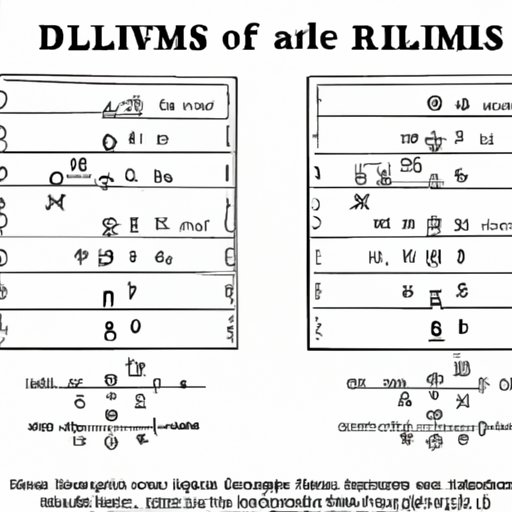
Introduction
Mathematics is a fundamental life skill that is used in various fields of study. The more you practice, the better you become, and dividing decimals is no exception. Dividing decimals is immensely important, as it helps us measure accurately, make precise calculations, and solve problems that require more than basic arithmetic skills. This article is designed to provide a step-by-step guide through the process of dividing decimals, and we’ll explore various real-world examples of how this mathematical skill can be used beyond the classroom.
Step-by-step Guide
Before diving into dividing decimals, it is essential to have a clear understanding of its rules. Dividing decimals is not similar to dividing integers, and the placement of the decimal is crucial. Here are the general rules for dividing decimals:
- Line up the divisor and dividend by their decimal points
- If the dividend doesn’t have as many decimal places as the divisor, place zeros in the dividend at the right of the last digit
- Divide as you would with whole numbers:
- Divide the leading part of the dividend by the divisor
- Write down the answer right underneath the dividend
- Subtract the product of the divisor and the quotient from the dividend
- Bring down the next digit to the right of the dividend
- Repeat steps 3 and 4 until there are no digits left, or the desired level of accuracy is achieved
For example, let’s divide 10.5 by 3.5:

Real-World Context
In our daily lives, dividing decimals is commonly used in various fields, such as finance, cooking, and measurements. In finance, decimals are used to manage money, calculate taxes, investments, and loans. Decimals are also used in the kitchen to measure ingredients in a recipe, while measurements for science and experiments are also expressed as decimals. By mastering decimal division, we can improve accuracy in these areas and make more informed decisions that require precision.
Interactive Lessons
Learning mathematics can be a daunting task. However, various online resources offer interactive games, quizzes, and exercises to help you practice dividing decimals. Some popular games include ‘Decimal division racing game’ and ‘Penguin jump multiplication game.’ These resources can be used as a fun way to practice dividing decimals or as a supplement to classroom learning. Ensure to incorporate these resources into your daily study routine to improve your skills gradually.
Visual Aids
Visual aids such as infographics, diagrams, and videos can significantly simplify the process of dividing decimals. These resources can be used in conjunction with other methods to improve the understanding of the concept. A popular example of a visual aid is a division diagram that shows how to create an imaginary decimal point. Using visuals is helpful because it presents an opportunity to see how one process can have different solutions depending on decimal placement.
Comparisons to Fractions
Dividing decimals may seem challenging, but the process is similar to dividing fractions. To illustrate this, let’s compare the samples:

The steps involved in dividing decimals are similar to the steps in dividing fractions. We can convert fractions to decimals and apply the decimal division rule outlined above. The key difference is that instead of placing the decimal point in the answer, a fraction is used. Recognizing that decimals and fractions share similar properties allows us to more confidently solve complex problems in our daily lives.
Common Mistakes
Dividing decimals can be challenging, leading to various errors when solved incorrectly. Some of the most common mistakes include misplacing a decimal point, only focusing on the significant digits, and assuming zeros are not essential. To avoid these errors, ensure to take your time in calculations, place zeros appropriately when needed, and check the answer for accuracy carefully.
Conclusion
Dividing decimals is a crucial skill that can significantly impact our daily lives, from calculating finances to measurements. By following the step-by-process guide outlined in this article, practicing with interactive lessons, and using visual aids, we can improve our accuracy and confidence in solving decimal division problems. Continuously practicing dividing decimals, learning from mistakes, and applying the rules to real-world situations will go a long way in improving mastery of the skill.




